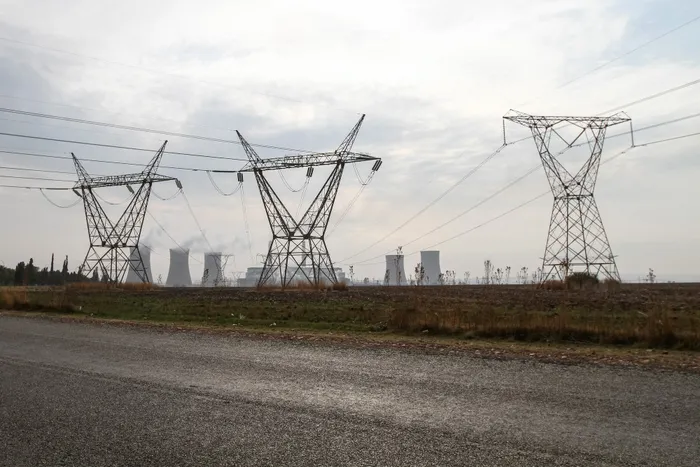South Africa – the world’s chosen nation

Everything that has gone wrong in the beloved country can and will be reversed. Photographer: Dean Hutton/Bloomberg
Once we get that right our economy will grow by more than 5% per annum for a decade and longer, and employment will grow strongly providing a better life for all.
Who would argue? The world sends South Africa favourable grants and favourable loans to meet its CO₂ net zero targets for green energy, and at the same time buys all the coal we can export at prices 250% higher than two years ago.
Financing worth $8.5 billion (about R144bn) from the US, the EU and Britain was given to South Africa. It sounds too good to be true and we all know what that means. But currently there are other strange assumptions that are not easy to explain.
The production of a solar farm requires three times more mineral resources than a similar-sized coal plant, and constructing a wind farm needs 13 times as much as a comparable gas-fired plant.
South Africa needs to spend $250bn over the next three decades closing down its coal-fired power plants and replacing them with green energy, according to a study by the Blended Finance Taskforce and the Centre for Sustainability Transitions at Stellenbosch University.
Indonesia’s energy ministry, Sunindyo Suryo Herdadi, said recently: “We believe Colombia and South Africa are in the better position to serve the market in Europe should they look for substitutes from Russia.”
Minister of Energy Gwede Mantashe is making the plea for coal. “My understanding is that Eskom has 45 000 megawatts connected, but at best gives us 26 000MW, and this when there is a gap of 22 000MW not decommissioned not giving us energy,” he said.
“Therefore, with that capacity connected I think there can be no collapse of energy generation, but we should pay attention and be servicing the units that are available in Eskom, connected, having capacity to give us energy, they must give us energy.”
He went on to say that if the power utility were to bow to pressure to do “what is appearing nice”, alluding to a swift move away from coal, “then we are going to be in darkness.”
On the question of organised crime at Eskom, Mantashe said they had to counter the threat to energy generation, not only at Eskom, but at new renewables plants. He cited the fate of the solar power plant at Hazelmere, north of Durban, which cost R25 million to construct, and which only lasted four years after it was targeted by looters.
It might not be popular, but the minister may have a point that is worth discussion.
Here some interesting facts about coal in South Africa:
*The coal industry employed 92 230 people in 2019 (86 647 in 2018), representing about 19% of total employment in the mining sector
* 258.9 million tons of coal was produced in 2019 (253Mt in 2018) with total coal sales of R139.3bn (R146bn in 2018)
* Net investment in the coal industry was R4.5bn in 2010, decreasing to R2.5bn in 2018 - an average decline of 15% per year. This is even though coal is a major source of electricity in the country
* 70% of coal volume is consumed domestically and more than 70% of electricity demand is generated from coal power
In a recent development, Richards Bay Coal Terminal (RBCT) has cancelled an export entitlement contract with Optimum Coal Mine in a development that has provoked an outcry by contractors who claim 2 000 jobs will be lost.
The recoverable coal reserves in South Africa amount to 66.7 billion tons, equivalent to about 7% of the world’s total (DMR, 2016).
A study by Nova Economics on behalf of Eskom estimates that 1% load shedding (as percentage of electricity sales) is associated with a 0.4% decrease in GDP growth.
The cost of an entire day of load shedding to the economy is estimated as:
• Stage 1 (1 000MW): R235.5m
• Stage 2 (2 000MW): R471.3m
•Stage 3 (3 000MW): R706.7m
• Stage 4 (4 000MW): R942.4m.
In the decade that Eskom reduced its electricity production by almost 10% the economy became 11% larger.
It is nothing less than spectacular that the economy was able to perform at this level in spite of Eskom, SAA, Denel, Transnet and Prasa.
Another layer of incredible adverse conditions came from the large level of state capture which consisted not only of looting and corruption, but also many other activities such as the efforts to disable the law enforcement agencies, the attack on the judiciary and the various acts of sabotage on our Infrastructure.
It is noteworthy to compare Eskom to Sasol. Sasol Mining produces about 40 Mt of saleable coal per annum, which is mainly used as gasification feedstock for Sasol Synfuels in Secunda and utilities coal for the Sasolburg operations.
Sasol uses roughly 40% of the amount of coal that Eskom uses. There has never been complains about coal quality issues, excuses such as wet coal, or sabotage at the plants or that the Guptas got hold of one of the Sasol mines such as Optimum?
If Sasol were to be given a management mandate to run Eskom, we can be assured that many operational issues will be resolved, the workforce will be right-sized, that is, surplus workers will be retrenched timeously.
Before Covid-19 SAA had 700 pilots, today it has 80; it comes down to too little too late, this fate seems likely for Eskom.
Everything stated above that went wrong can and will be reversed, of that I have no doubt.
Once we get that right our economy will grow by more than 5% per annum for a decade and longer, and employment will grow strongly providing a better life for all.
Corrie Kruger is an Independent Analyst
BUSINESS REPORT
Related Topics: